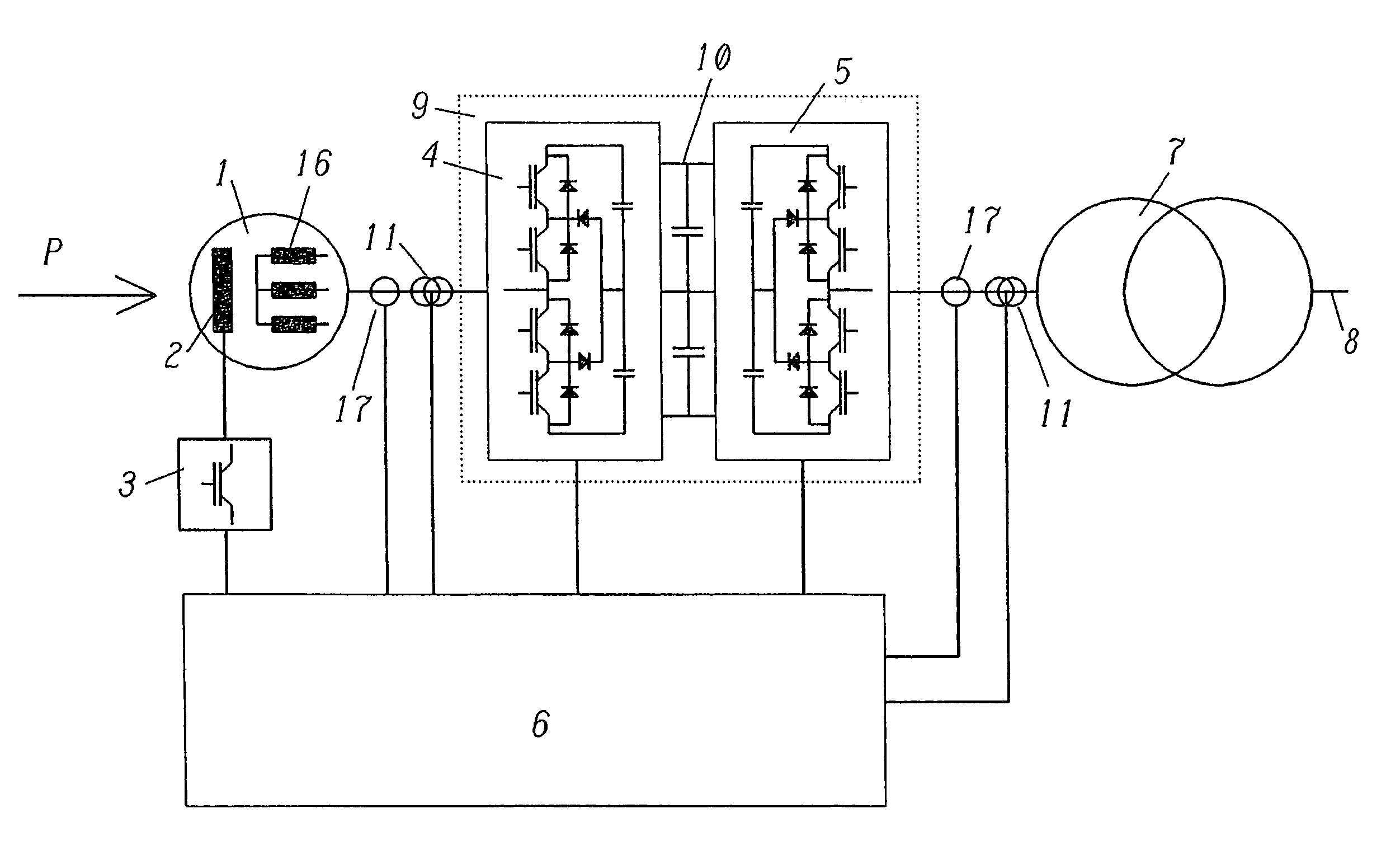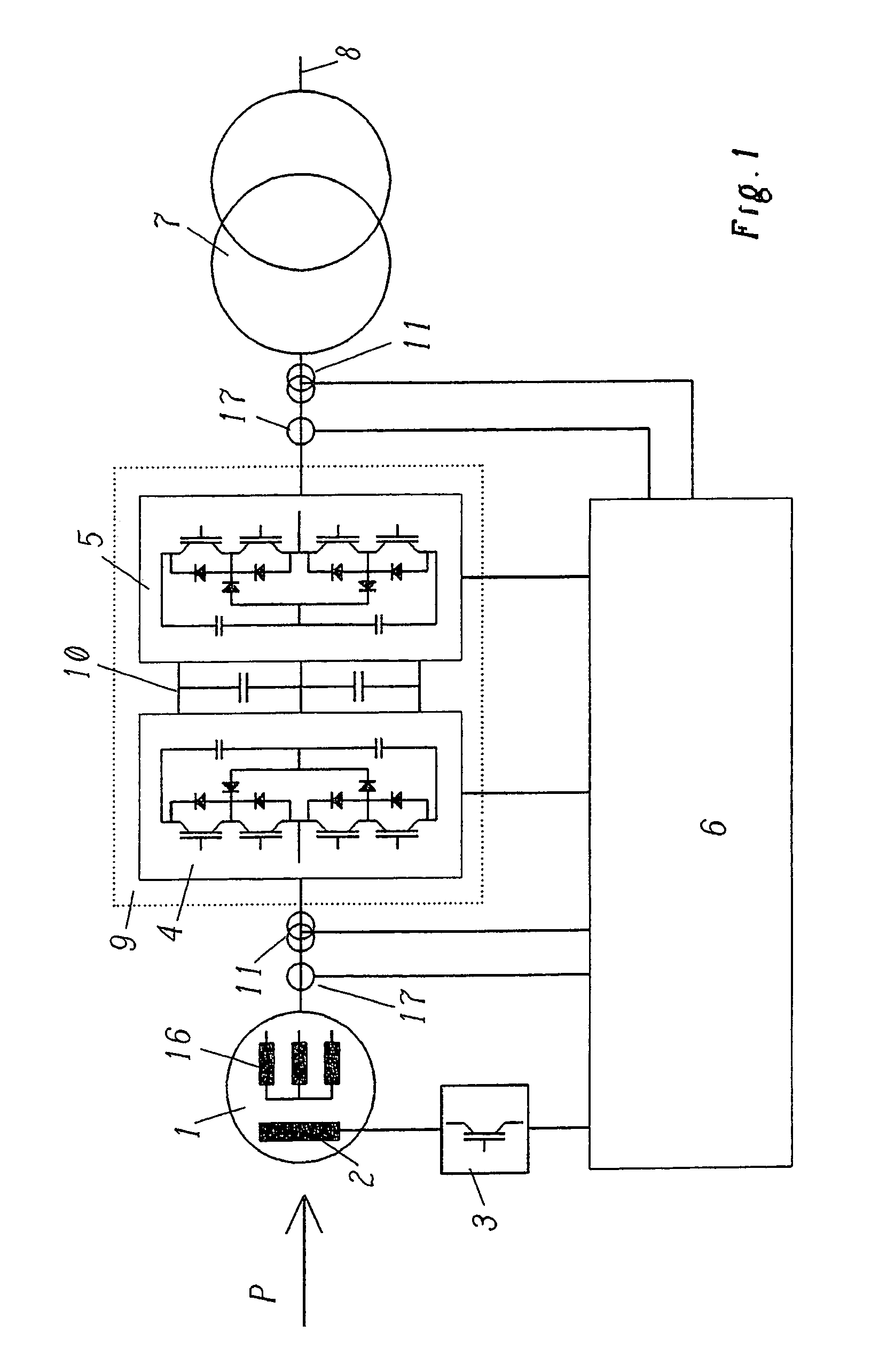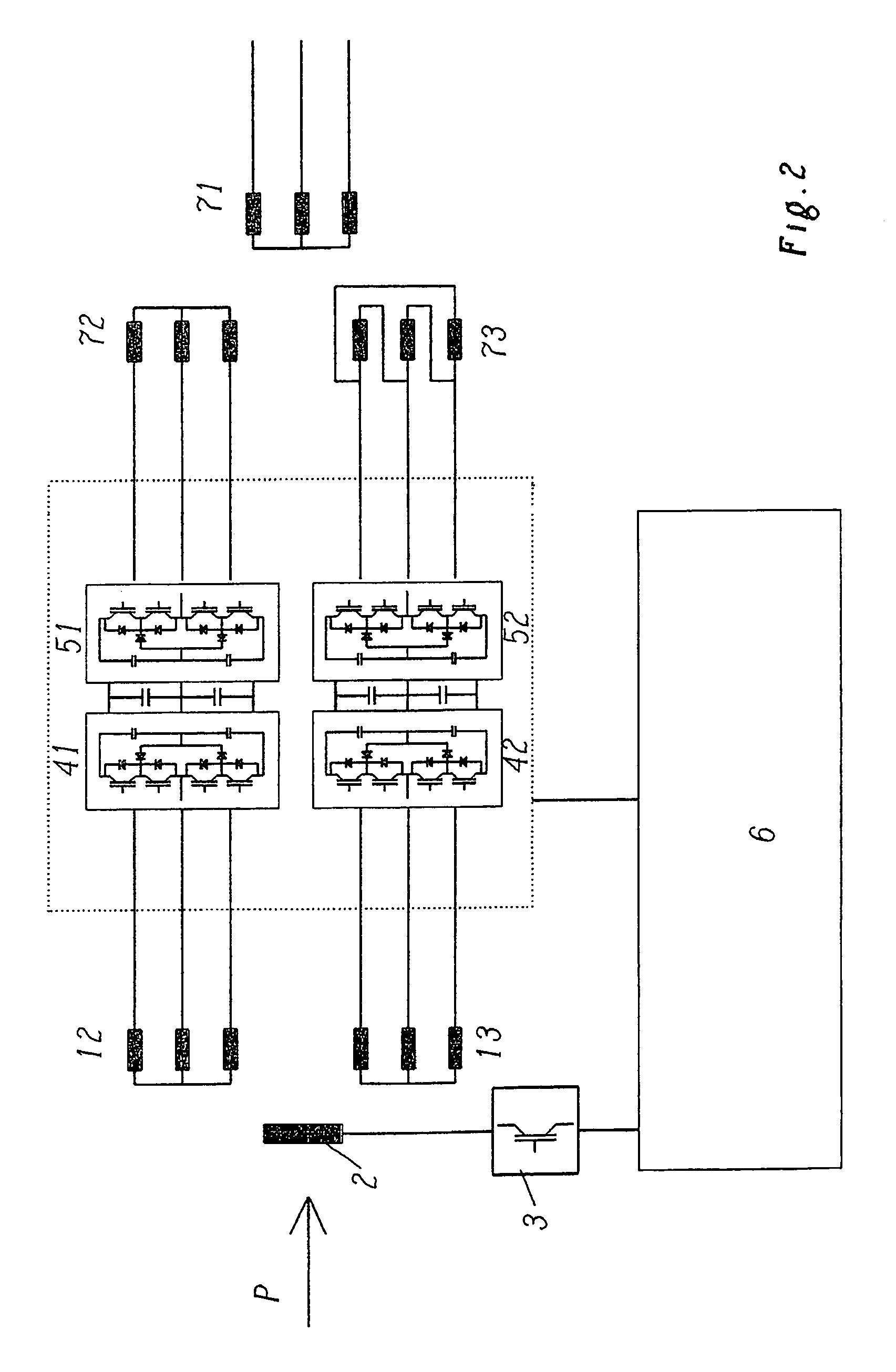Frequency converter for high-speed generators
a generator and frequency converter technology, applied in the direction of electric generator control, machine/engine, dynamo-electric converter control, etc., can solve the problem that thermal or other sources of energy such as gas turbines cannot generate torque at low speeds, and the ratio of amplitude of alternating voltage between input and output cannot be simple and flexible, so as to achieve low switching losses and simple and flexible
- Summary
- Abstract
- Description
- Claims
- Application Information
AI Technical Summary
Benefits of technology
Problems solved by technology
Method used
Image
Examples
Embodiment Construction
[0030]Many power generation systems make use of thermal or other sources of energy such as gas turbines as the source of power. Typically, such sources of power are characterized by fast rotational speeds and thus by high operating frequencies as well as by the possibility of changing the rotational speed in order to make an adaptation to the power demand.
[0031]In order to take into account the various rotational speeds of the energy generator, which is symbolically represented, for example, in FIG. 1 by the reference letter P, gears, for instance, can be employed between the actual power source P and the generator for generating electric power. Such gears, however, normally have the drawback that they entail high losses and require a great deal of maintenance. Since the rotational frequency of the generator ultimately determines the frequency of the alternating current that is generated with it, as an alternative, it is also possible to connect the generator directly to the source ...
PUM
 Login to View More
Login to View More Abstract
Description
Claims
Application Information
 Login to View More
Login to View More - R&D
- Intellectual Property
- Life Sciences
- Materials
- Tech Scout
- Unparalleled Data Quality
- Higher Quality Content
- 60% Fewer Hallucinations
Browse by: Latest US Patents, China's latest patents, Technical Efficacy Thesaurus, Application Domain, Technology Topic, Popular Technical Reports.
© 2025 PatSnap. All rights reserved.Legal|Privacy policy|Modern Slavery Act Transparency Statement|Sitemap|About US| Contact US: help@patsnap.com



